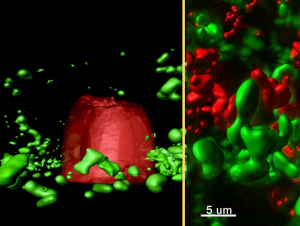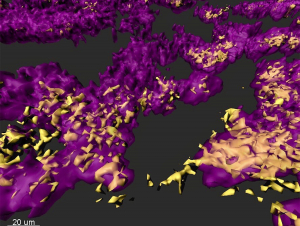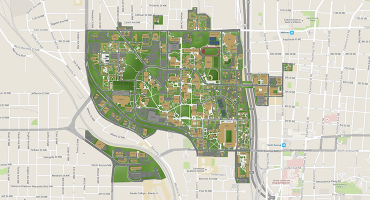To request a media interview, please reach out to experts using the faculty directories for each of our six schools, or contact Jess Hunt-Ralston, College of Sciences communications director. A list of faculty experts is also available to journalists upon request.
Latest News
Know those particles that can be in two places at the same time and are not just particles but also waves? They appear to move in even weirder ways than previously thought. Theoretical physicists at Georgia Tech applied a week's worth of extreme computing power to predict the movements of fermions by including quantum optics, or light-like, ideas in their mathematical, theoretical modeling of how these specks of ultracold matter take flight.
Despite the wealth of information about how bacteria communicate, little is known about how quorum sensing proceeds during an infection. Georgia Tech researchers describe for the first time how close bacteria need to be to “talk” in an environment similar to chronic infection in cystic fibrosis.
Until a permanent chair is appointed, Mark Wheeler will serve as interim chair of the School of Psychology.
School of Chemistry and Biochemistry Assistant Professor Henry La Pierre has received a Beckman Young Investigator Award to pursue research that would establish the foundation for innovations in magnetic materials based on f-block elements.
The National Science Foundation and Simons Foundation have launched a multimillion-dollar national project to advance mathematics and biology. The project comprises three centers, including one based in the Georgia Institute of Technology. The project aims to convey the benefits of physics’ age-old intertwining with math upon biology, a science historically less connected with it.
Most of what we know today about deadly bacteria such as Pseudomonas aeruginosa was obtained from studies done in laboratory settings. Research reported May 14 in the journal Proceedings of the National Academy of Sciences shows that this laboratory-based information may have important limits for predicting how these bugs behave once they’ve invaded humans.








